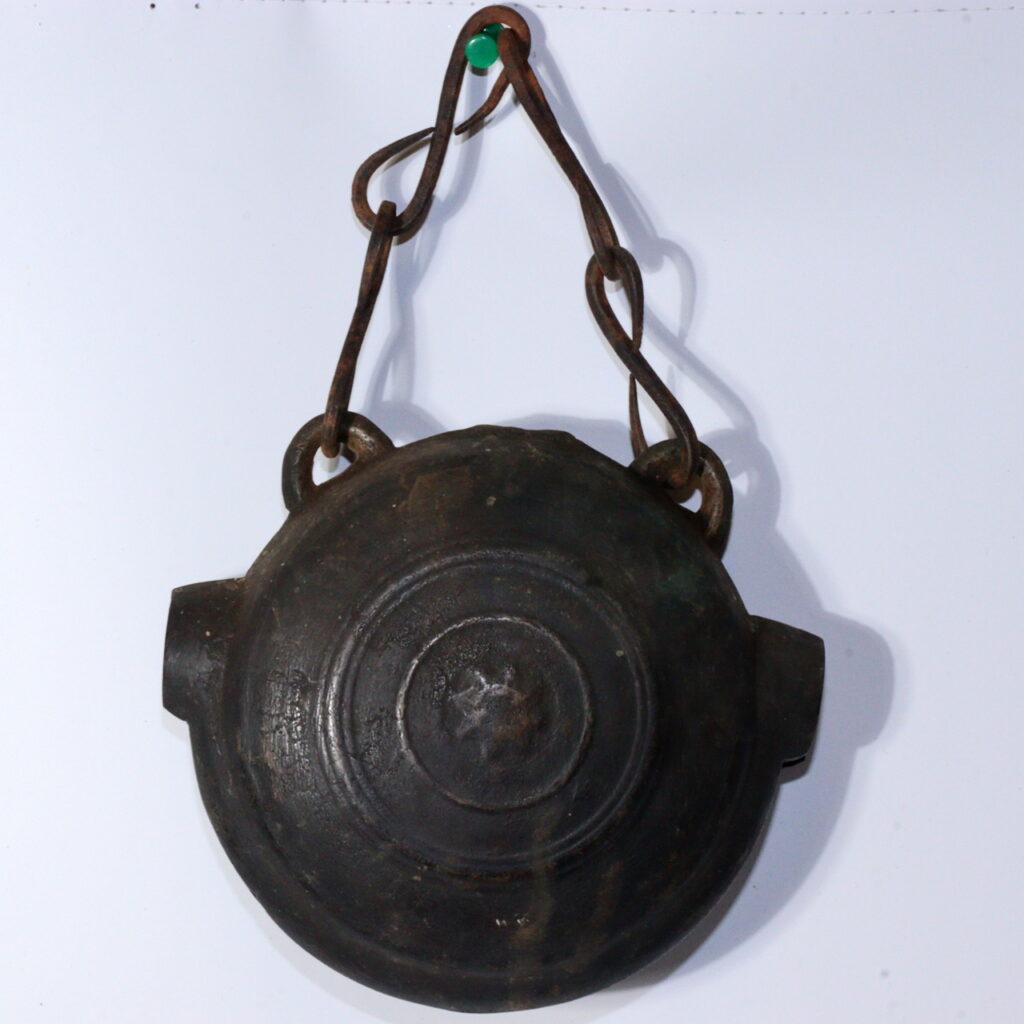
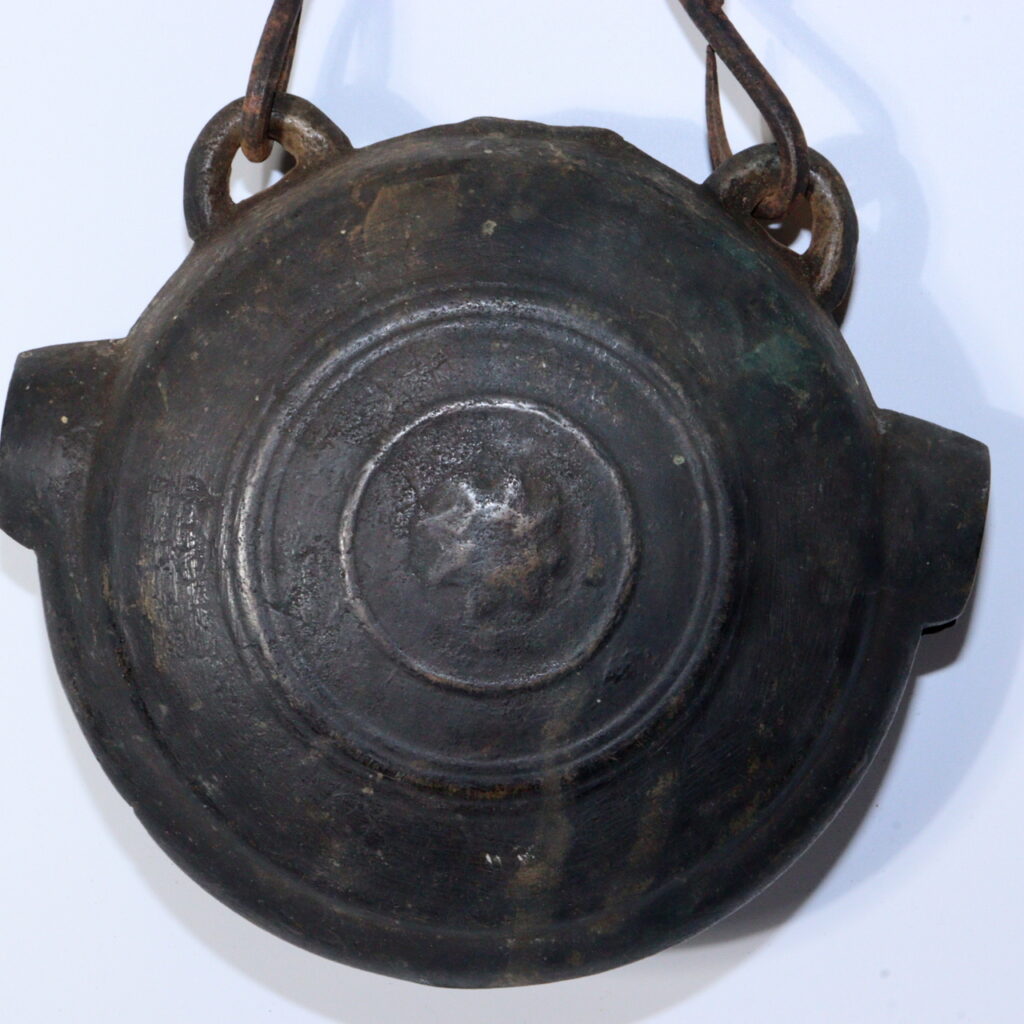
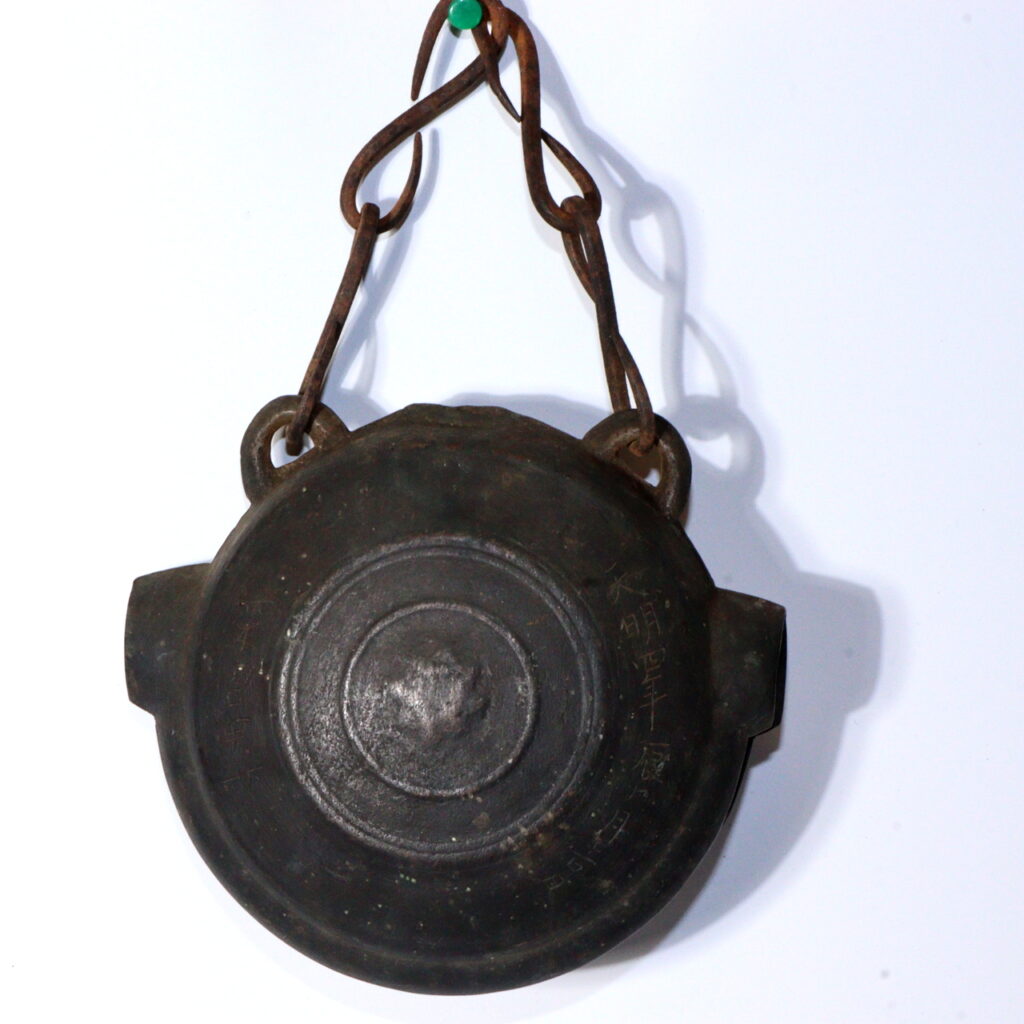
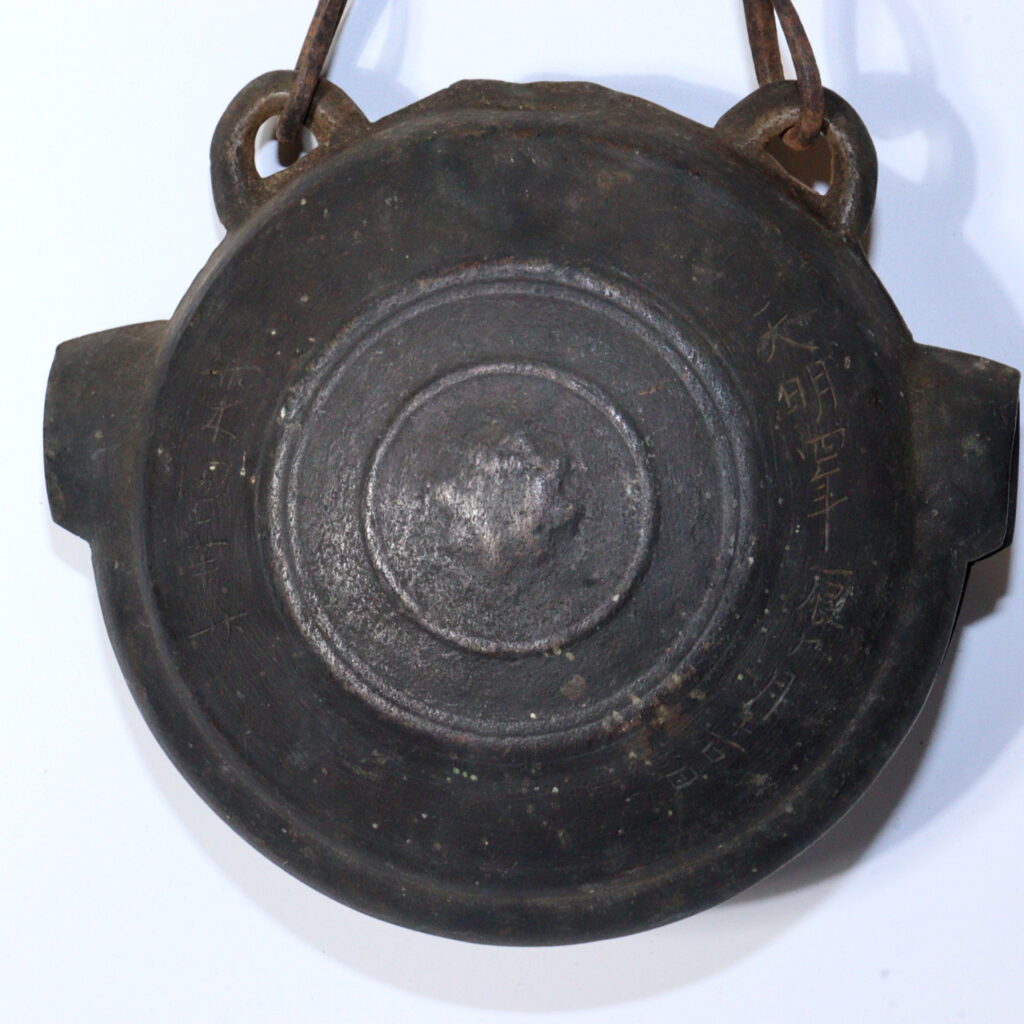
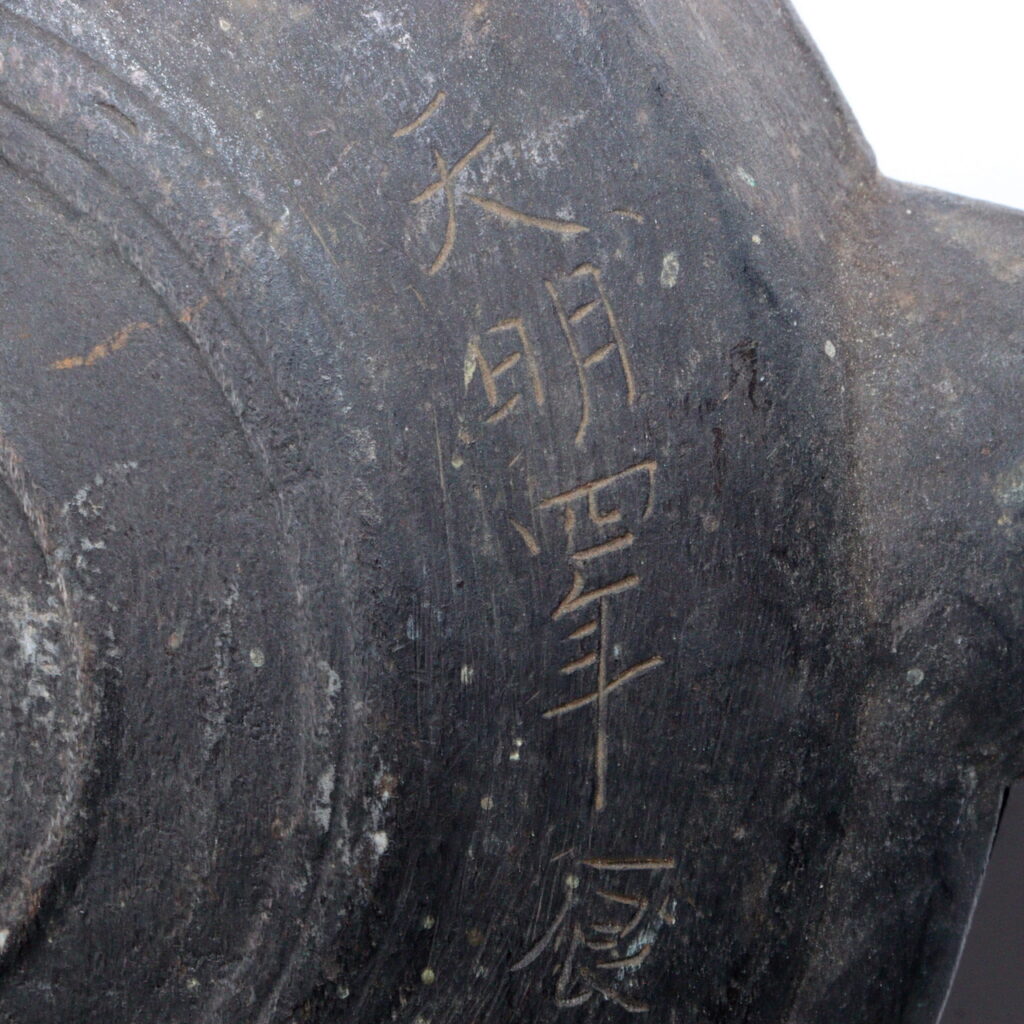
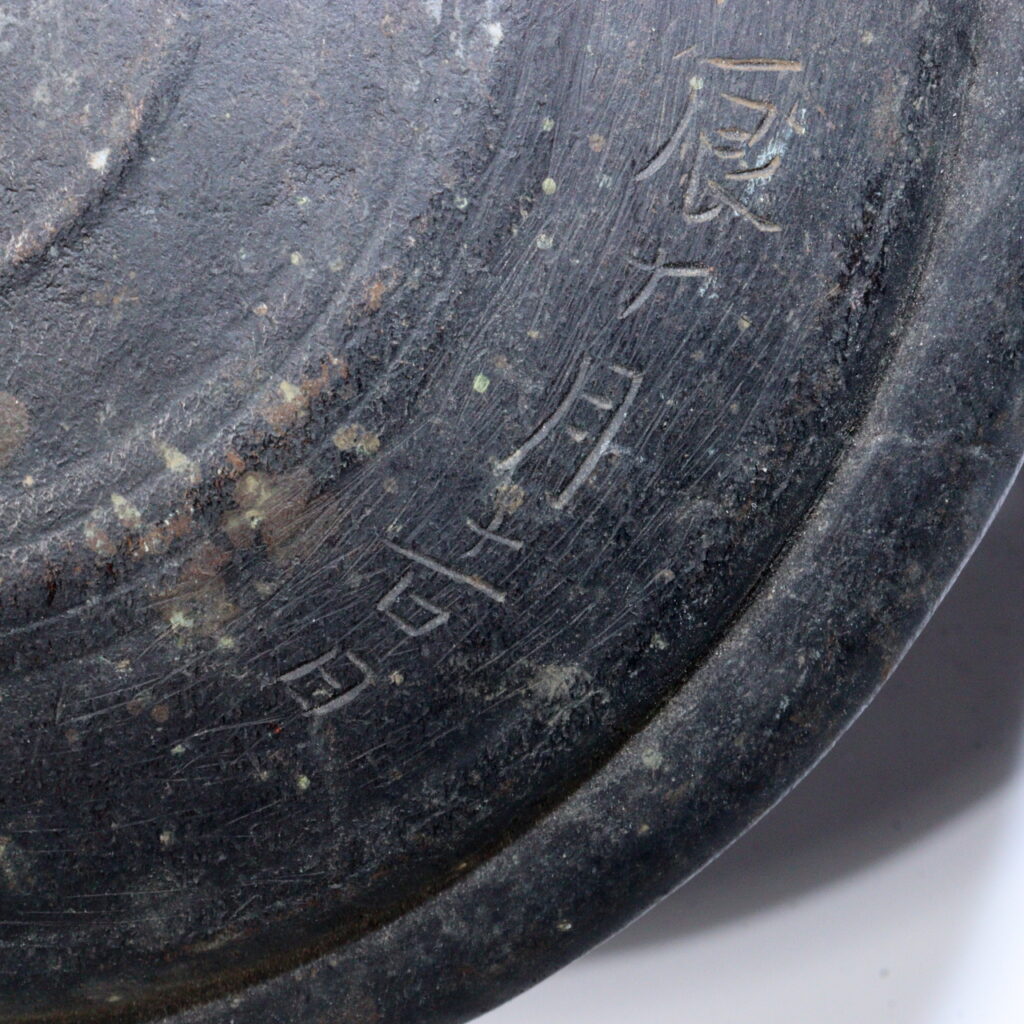
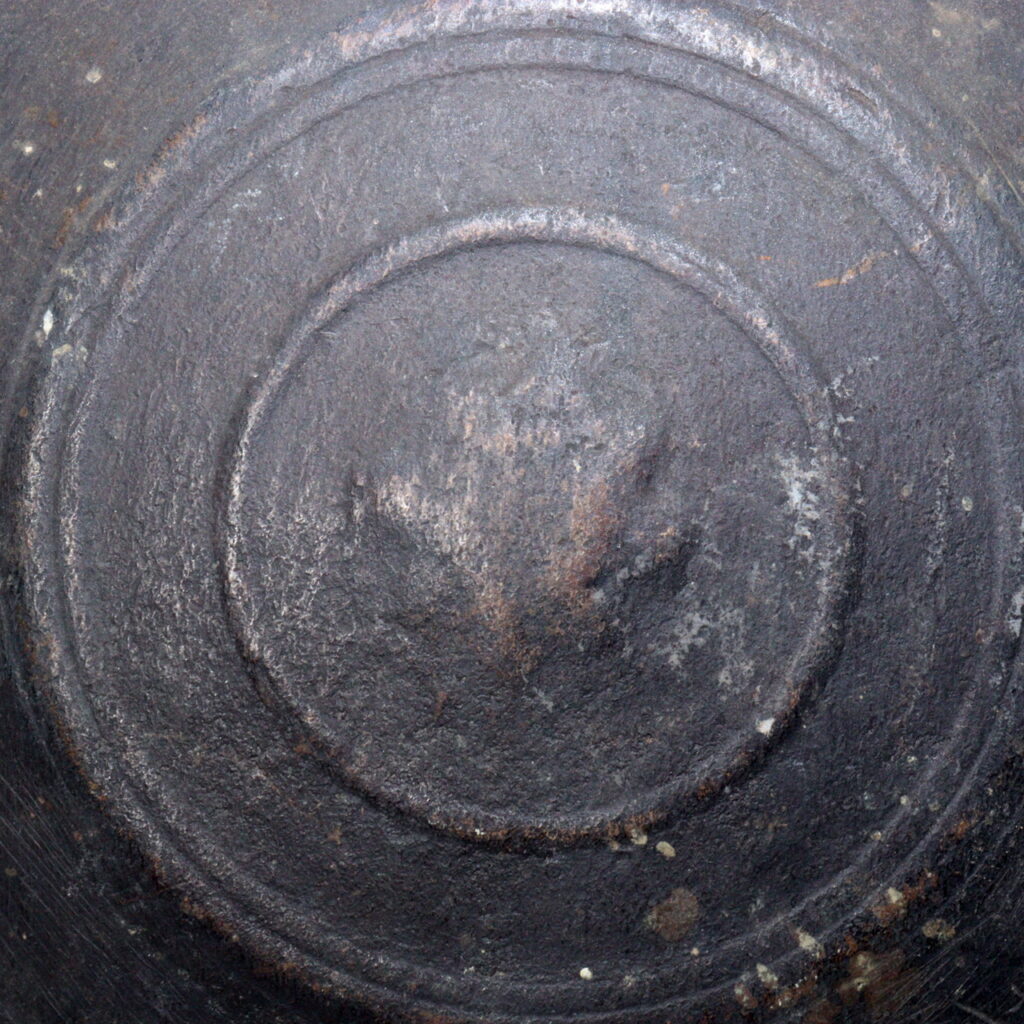
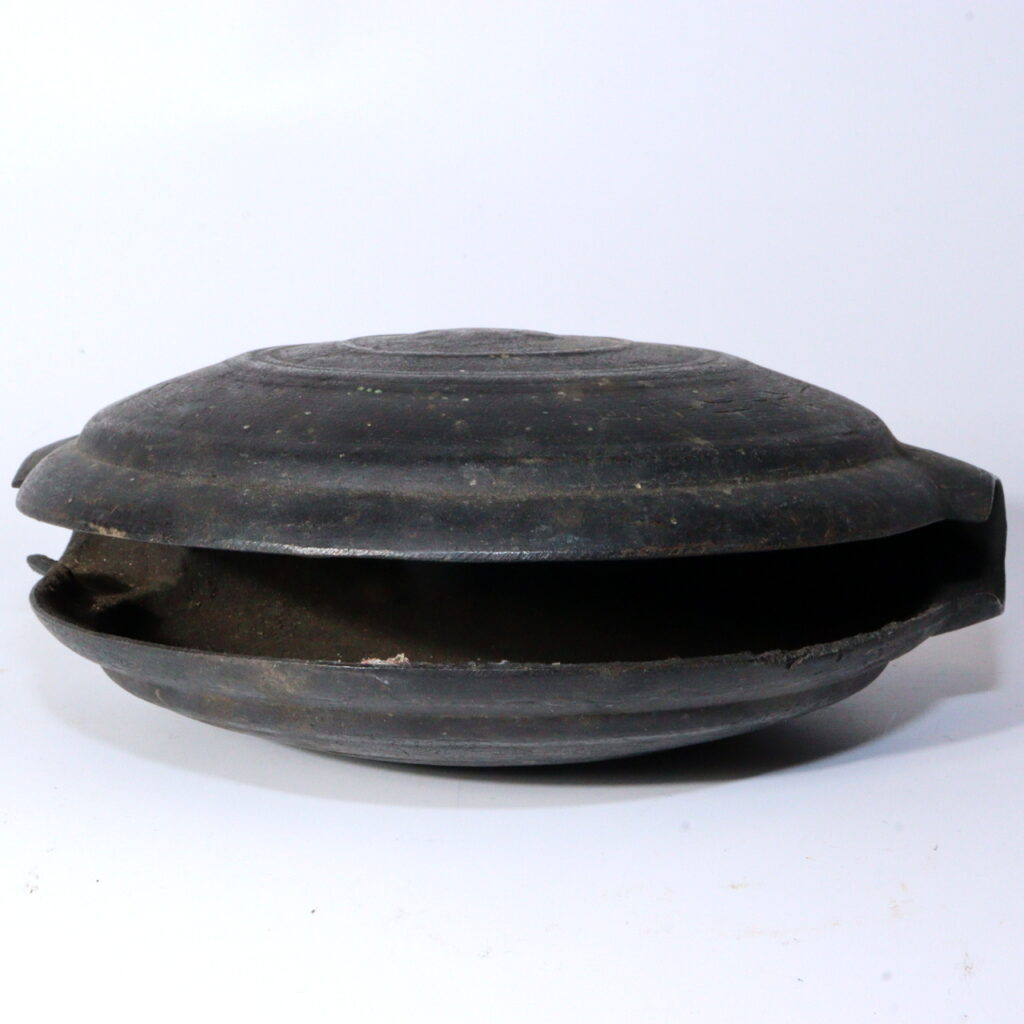
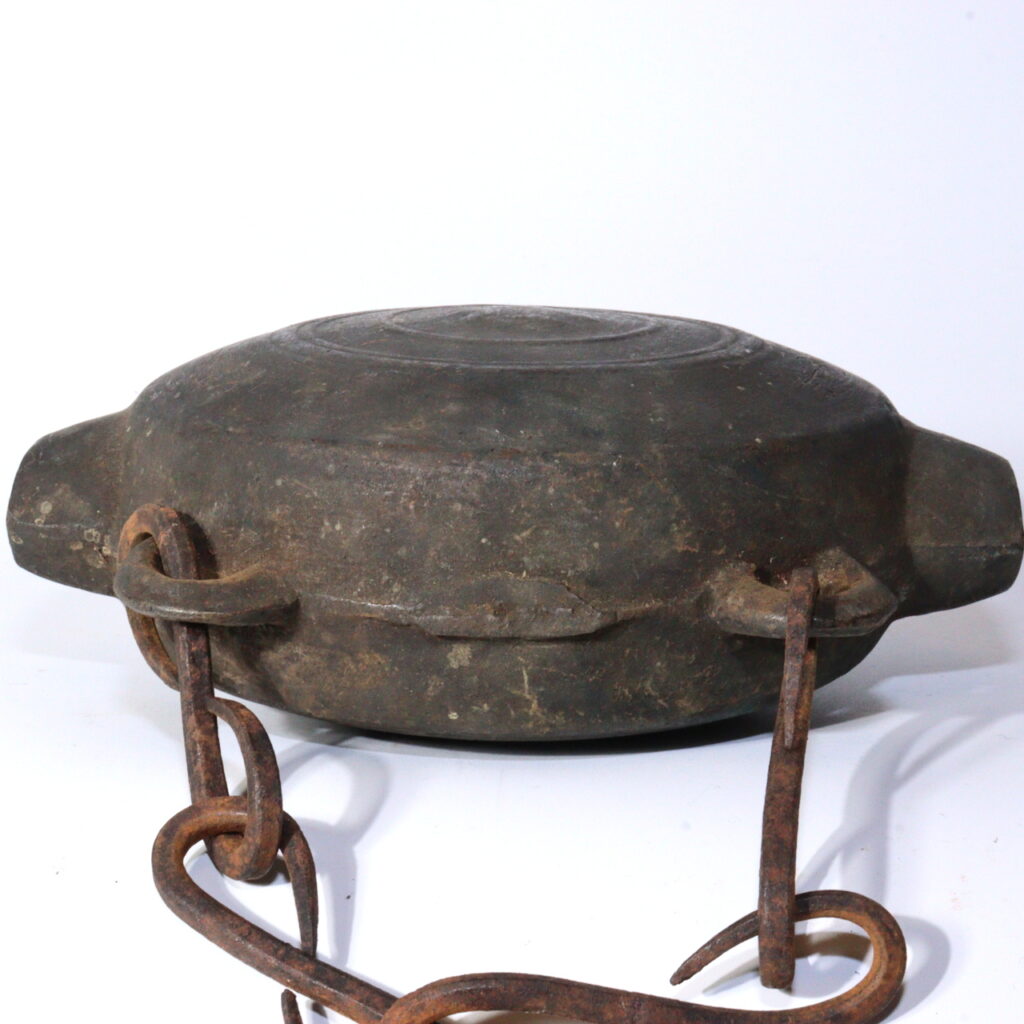
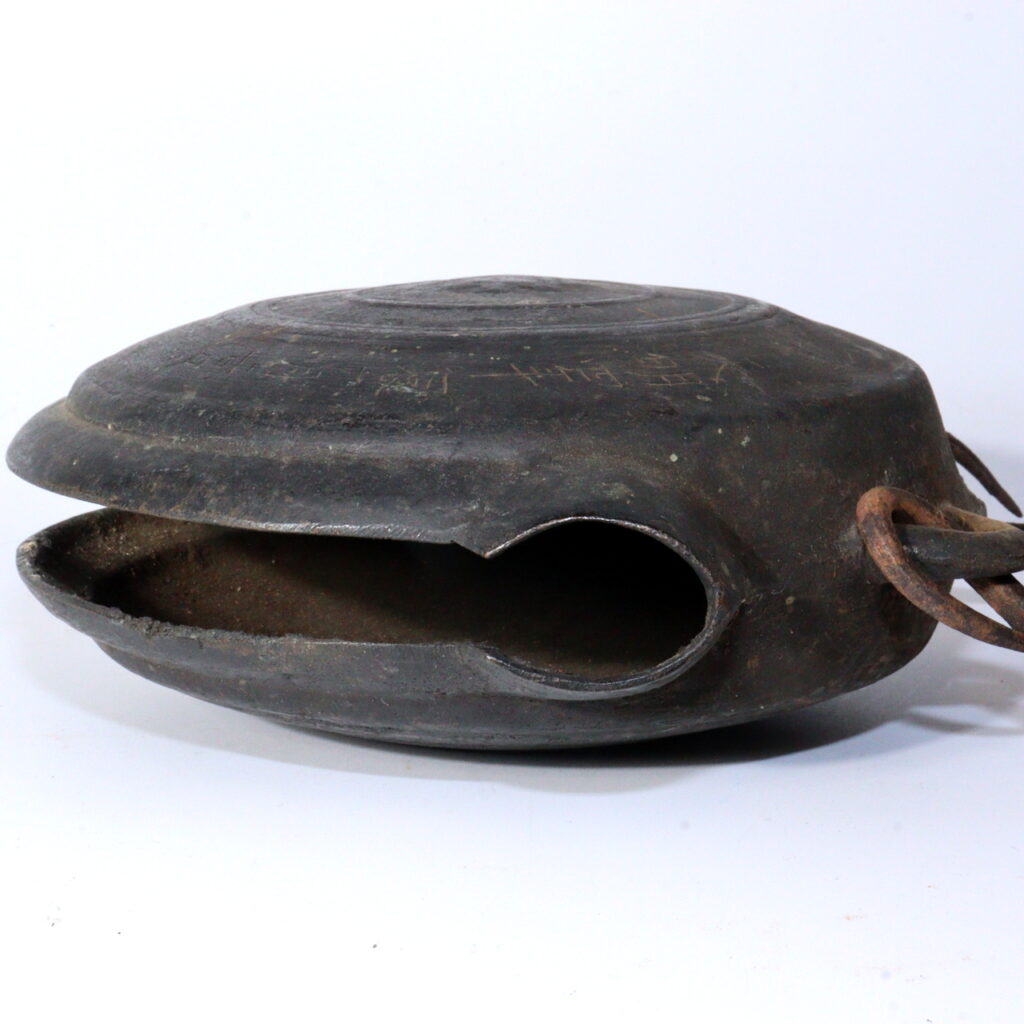
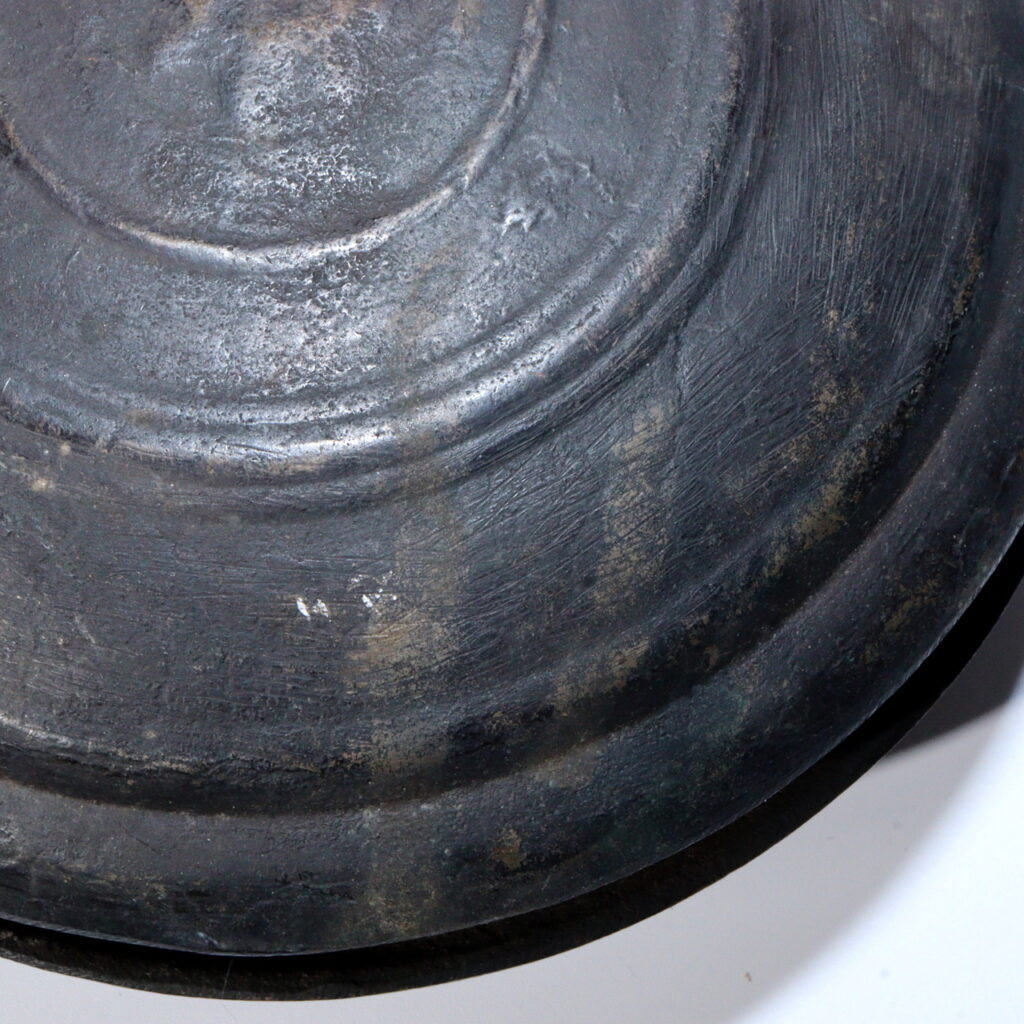
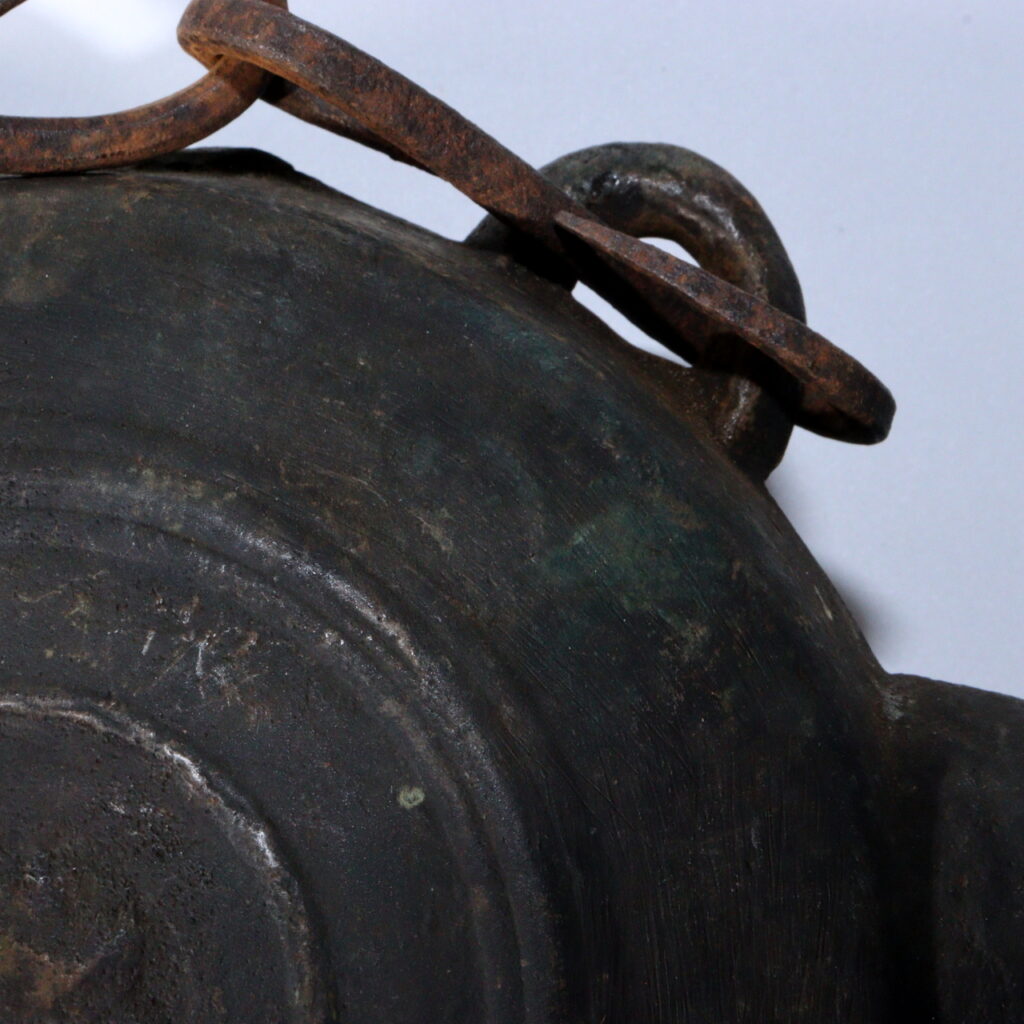
Among the many revered forms of Japanese antiques, few resonate—literally and symbolically—like the waniguchi. This rare bronze gong, dated to Tenmei 4 (1784) during the Edo period, is more than a religious instrument. It is a living artifact that echoes the prayers of centuries past and tells a rich story of craftsmanship, ritual, and resilience.
The Story Behind This Item
The waniguchi (literally “crocodile mouth”) is a unique type of temple gong traditionally suspended at Shinto shrines and Buddhist temples. Unlike hanging bells that swing, the waniguchi is struck with a thick rope to produce a resonant, solemn tone during prayers, offerings, and ritual ceremonies.
This particular piece bears an engraved inscription identifying its creation in Tenmei 4 (1784)—a time under the rule of Tokugawa Ieharu, and a period historically marked by the devastating Great Tenmei Famine. Objects from this era reflect both artistic refinement and spiritual solemnity. The engraving on this gong places it within that context of hardship and enduring faith.
As a compelling comparison, similar waniguchi bells can be seen hanging during important Buddhist ceremonies, such as the Fudōdō Kaibyō Hōyō (不動堂開扉法要) at the famous Kinkaku-ji (Golden Pavilion) in Kyoto. In such rituals, the twin waniguchi gongs are struck to open the sacred doors of the hall—an act of both sound and spirit.
Highlights and Unique Features
- Era: Edo period, dated Tenmei 4 (1784)
- Material: Cast bronze body with an original iron hanging chain (exceptionally rare)
- Inscription: Clear engraving with the production year and context
- Usage: Traditionally struck during religious ceremonies at shrines or temples
- Condition: Preserves its aged patina, surface wear, and historical integrity
The survival of the original Edo-period iron chain is especially noteworthy. Most surviving waniguchi bells have lost their original hangings—this detail makes the item a collector’s treasure.
Why It Appeals to Collectors
For collectors of Edo-period artifacts, Japanese Buddhist items, or antique bells, this waniguchi offers immense value. Its documented date, intact form, and spiritual function make it a perfect centerpiece for serious collectors or museums.
The waniguchi also embodies wabi-sabi aesthetics—its worn surface, age-darkened bronze, and handmade iron chain speak to a history that is imperfect, impermanent, and profoundly beautiful.
Additionally, its historical significance—dating back to a time of national hardship—makes it not just an object of beauty, but a symbol of resilience and communal faith.
Conclusion and Where to Find It
This 1784 bronze waniguchi with its original chain is more than an antique—it is a bridge between the human and the divine, between sound and silence, between history and the present. Whether for private collection, scholarly research, or ritual context, it is a remarkable artifact that embodies the soul of Edo-period Japan.
If this item has already sold, please browse other historical treasures here:
🔗 Explore more Japanese antiques at Koedo Sun Art